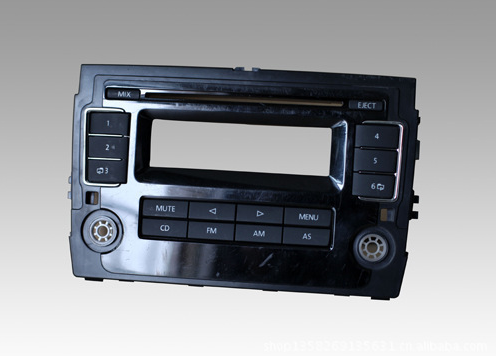一般情況來說,塑料材料性能的複雜性決定了注塑件成型過程的複(fù)雜性。塑(sù)料材料(liào)的性能又因品種不同、生產注塑(sù)件加工條件不同(tóng)、牌號不同、甚至(zhì)批次不同出現(xiàn)很大的區別,這是有規律。因此不(bú)同的性能參(cān)數(shù)可能導致完全不同的成型結(jié)果。性(xìng)能參數的設定是一定要注(zhù)意的。
Generally speaking, the complexity of plastic material properties determines the complexity of injection molding process. The properties of plastic materials vary greatly due to different varieties, different processing conditions for producing injection molded parts, different brands and even different batches, which is regular. Therefore, different performance parameters may lead to completely different molding results. Attention must be paid to the setting of performance parameters.
注射時間需要注意,注射時間對注塑件(jiàn)過程的影響表現在(zài)三個(gè)方麵:縮短注射時間,熔體中的剪切(qiē)應(yīng)變率也會提高。(1)由於塑料熔(róng)體的剪切變稀特性,熔體的(de)粘度降(jiàng)低,為了充滿型腔所需要的注射壓力(lì)也要降低。(2)為了充(chōng)滿型腔(qiāng)所需要的注射壓力(lì)也要提高(3)剪切發熱越(yuè)大,同時因熱傳導而散失的熱量少,因此熔(róng)體(tǐ)的溫度高,粘(zhān)度越低,為了充滿(mǎn)型腔所需要的注射壓力也要降低。以上三種情況(kuàng)共同作用的結果,使充滿型腔所需要(yào)的注射壓(yā)力的曲線呈現“U”形。存在一個注射時間,此時所需的注射壓力(lì)小
Injection time should be paid attention to. The influence of injection time on the injection process is reflected in three aspects: shortening the injection time will also improve the shear strain rate in the melt. (1) Due to the shear thinning characteristics of the plastic melt, the viscosity of the melt is reduced, and the injection pressure required to fill the cavity is also reduced. (2) The injection pressure required to fill the cavity should also be increased. (3) the greater the shear heating, and the less the heat lost due to heat conduction, so the higher the temperature of the melt and the lower the viscosity, the lower the injection pressure required to fill the cavity. As a result of the joint action of the above three cases, the curve of the injection pressure required to fill the cavity presents a "U" shape. There is an injection time when the required injection pressure is small

注射溫度也是需要注意的(de)。熔體流入冷 卻的型腔,因熱傳(chuán)導而(ér)散失熱量。與此(cǐ)同時,由於剪切作用而產生熱量,這部分熱量可能較熱傳導散失的熱量多,也可能少,這是多方麵的(de)因素導(dǎo)致的,主要取決於注塑件條件。另外熔體的(de)粘性隨溫度升高(gāo)而變低(dī)。性(xìng)能(néng)如此(cǐ)變化(huà)。這樣,注射溫度越(yuè)高,熔體的粘度越低,所需(xū)的(de)充(chōng)填壓力越小。這種變化不(bú)一而語,同時,注(zhù)射溫度也受到熱降解溫度、分 解溫度的限(xiàn) 製。
The injection temperature also needs attention. The melt flows into the cooled cavity and loses heat due to heat conduction. At the same time, the heat generated by shear may be more or less than that lost by heat conduction, which is caused by many factors and mainly depends on the conditions of injection molded parts. In addition, the viscosity of the melt decreases with the increase of temperature. Performance changes like this. In this way, the higher the injection temperature, the lower the viscosity of the melt and the smaller the filling pressure required. At the same time, the injection temperature is also limited by thermal degradation temperature and decomposition temperature.
在這個注塑加工中,不同條件對製品的影響(xiǎng)是多樣化的。塑料的材料性能不同,參數不同導致的。注塑製品的注塑條件,溫度越高,粘度也就越低,壓力越小。這(zhè)是注射溫度,在多因素下的表現。影響溫度的因素是多樣化(huà)的,溶體溫度越(yuè)低,流動性(xìng)就(jiù)越差。就是注(zhù)射時間,它(tā)有幾(jǐ)大表現需要(yào)注意,若溶體中的剪切應變速率提高,則所需注射壓力也要提高。若粘度降低,則注射壓力要降低;若溶(róng)體溫(wēn)度高,
In this injection molding process, the effects of different conditions on products are diverse. It is caused by different material properties and parameters of plastics. For injection molding conditions of injection molded products, the higher the temperature, the lower the viscosity and the lower the pressure. This is the performance of injection temperature under multiple factors. The factors affecting the temperature are diverse. The lower the solution temperature, the worse the fluidity. It is the injection time. There are several major manifestations that need to be paid attention to. If the shear strain rate in the solution increases, the required injection pressure also increases. If the viscosity decreases, the injection pressure should be reduced; If the solution temperature is high,
粘度低,注射壓力也要降低。這個壓力曲線呈U型存在。這是注塑加工對產品的影響。
If the viscosity is low, the injection pressure should also be reduced. The pressure curve is U-shaped. This is the impact of injection molding on products.
